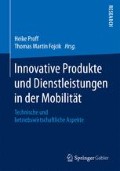Abstract
This paper shows how the Functional Safety standard ISO 26262 can be applied to identify and classify potential hazardous events and to derive a safety concept and the associated Safety Requirements related to the prevention or mitigation of these hazardous events. Especially, it addresses the problem how the right level of detail can be found for the Safety Requirements, how Safety Goals can be defined such that the development of the system is supported, and how assumptions can be handled. A procedure for deriving Safety Requirements is presented which supports system development and ensures that no relevant requirement (or attribute) is omitted. This procedure includes requirements allocation, the Safety Analysis and the description of an appropriate OEM‐Supplier interface.
Access this chapter
Tax calculation will be finalised at checkout
Purchases are for personal use only
Preview
Unable to display preview. Download preview PDF.
References
[1] ISO, ISO26262:2011 Road vehicles ‐ Functional safety, International Organization for Standardization, 2011.
[2] K. Beckers, T. Frese, D. Hatebur und M. Heisel, „A Structured and Model‐Based Hazard Analyss and Risk Assessment Method for Automotive Systems,“ 24th IEEE Int. Symposium on Software Reliability Engineering, pp. 238‐247, 2013.
[3] IEC, BS IEC 61882:2001 Hazard and operability studies (HAZOP studies) ‐ Application guide, BS IEC, 2001.
[4] T. P. Kelly, „A Systematic Approach to Safety Case Management,“ SAE 2004 World Congress, March 2004.
[5] T. P. Kelly und R. A. Weaver, „The Goal Structuring Notation ‐ A Safety Argument Notation,“ Proceedings of the Dependable Systems and Networks, Workshop on Assurance Cases, 2004.
[6] K. Beckers, I. Côté, T. Frese, D. Hatebur und M. Heisel, „Systematic Derivation of Functional Safety Requirements for Automotive Systems,“ Proceedings of SAFECOMP, pp. 65‐80, 2014.
[7] W. M. Goble, The Use and Development of Quantitative Reliability and Safety analysis in New Product Design, Eindhoven, 1998.
[8] K. Beckers, I. Côté, T. Frese, D. Hatebur und M. Heisel, „A Structured Validation and Verification Method for Automotive Systems considering the OEM/Supplier Interface,“ Proceedings of SAFECOMP, pp. 90‐107, 2015.
Author information
Authors and Affiliations
Corresponding author
Editor information
Editors and Affiliations
Rights and permissions
Copyright information
© 2017 Springer Fachmedien Wiesbaden GmbH
About this chapter
Cite this chapter
Frese, T., Hatebur, D., Côté, I., Aryus, HJ., Heisel, M. (2017). Deriving Safety Requirements according to ISO 26262 for complex systems: A method applied in the automotive industry. In: Proff, H., Fojcik, T. (eds) Innovative Produkte und Dienstleistungen in der Mobilität. Springer Gabler, Wiesbaden. https://doi.org/10.1007/978-3-658-18613-5_13
Download citation
DOI: https://doi.org/10.1007/978-3-658-18613-5_13
Published:
Publisher Name: Springer Gabler, Wiesbaden
Print ISBN: 978-3-658-18612-8
Online ISBN: 978-3-658-18613-5
eBook Packages: Business and Economics (German Language)

